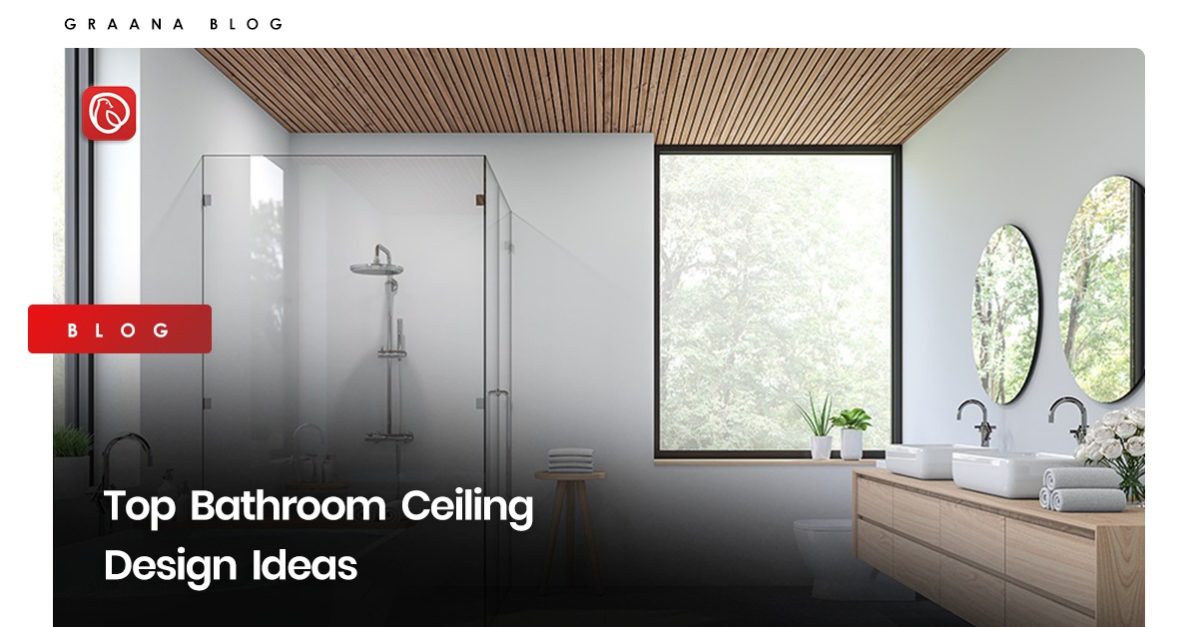When it comes to designing a bathroom, the ceiling is an important aspect that shouldn’t be overlooked. A well-designed bathroom ceiling can add style and personality to a space, while also enhancing its functionality.
There are numerous modern options for bathroom ceiling panels, such as tiles, tin tiles, faux tin tiles, styrofoam tiles, plaster boards, particle boards, suspended ceilings, fabric ceilings, and stretched ceilings.
With so many alternatives available, it is possible to create unique and eye-catching false ceiling designs for bathrooms. Even in small bathrooms, creative and imaginative design ideas can transform the space within a modest budget.
Graana.com has listed down the most popular bathroom ceiling design options below and provides some tips for transforming a standard bathroom into a luxury space.
The Impact of a Bathroom Ceiling Design
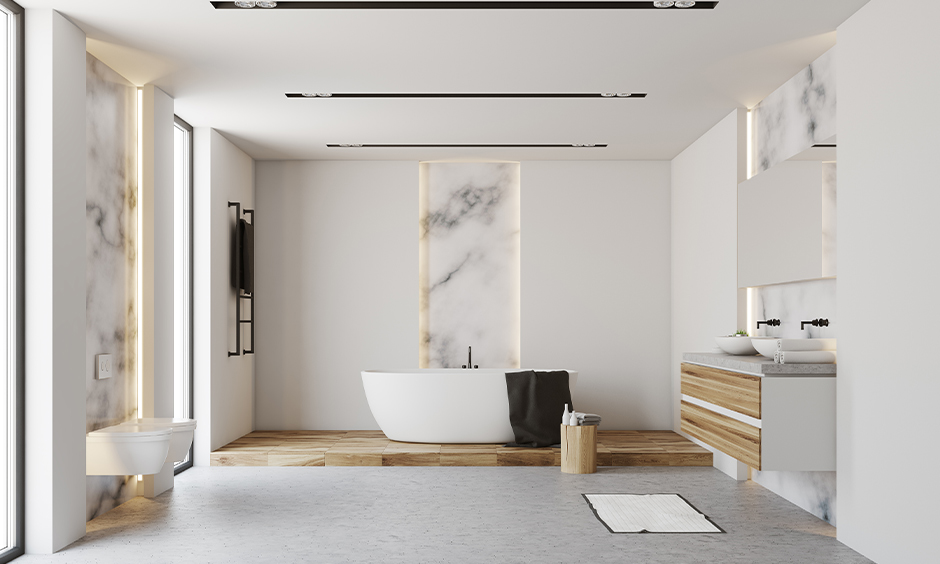
The bathroom ceiling is often overlooked in the design process, but it plays an essential role in its overall aesthetic and functionality. A well-designed bathroom ceiling can enhance the visual appeal of the room, create a sense of spaciousness, and provide practical benefits, such as improved ventilation and lighting.
For example, a high ceiling with a skylight or recessed lighting can make a small bathroom feel larger and more open. Similarly, a textured ceiling can add depth and interest to a plain bathroom, while a simple, clean ceiling can create a modern and minimalist feel.
Bathroom Ceiling Materials
When it comes to a bathroom ceiling design, there are many materials to choose from. Here are some of the most commonly used ones:
Painted Drywall
This is a popular and cost-effective option for bathroom ceilings. Drywall can be easily painted to match the walls, creating a seamless and cohesive look. However, it’s important to choose a paint that is resistant to moisture and mould.
Tile
Bathroom ceiling tiles are a durable and waterproof option that can add texture and interest to the space. They come in a variety of materials, including ceramic, porcelain, and glass.
Beadboard
Beadboard is a type of panelling that is often used in bathrooms. It adds a classic and timeless feel to the space, and is available in a range of colours and finishes.
Metal
Metal ceilings are a popular choice for modern and industrial-style bathrooms. They come in a range of finishes, including copper, aluminium, and stainless steel.
Wood
Wood ceilings are a popular option for rustic style and farmhouse-style bathrooms. They add warmth and texture to the space, and can be stained or painted to match the rest of the decor.
Bathroom Ceiling Design Ideas
Now that we’ve explored the different materials for bathroom ceilings, let’s dive into some trending design ideas.
Statement Ceiling
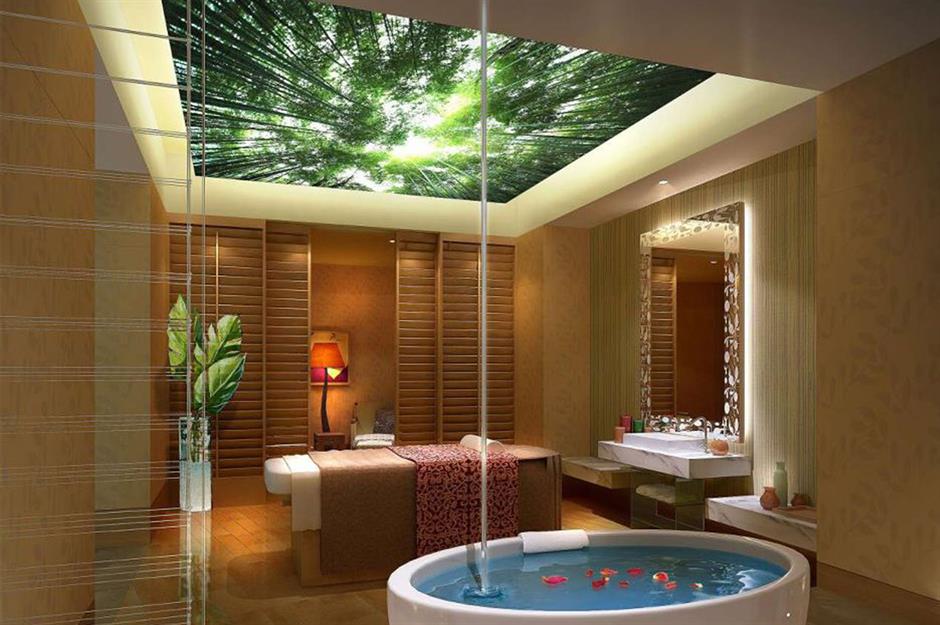
A statement ceiling can add drama and visual interest to a bathroom. This could be a patterned tile or a painted design. For example, a bold, graphic pattern in black and white can create a modern and sophisticated look.
False Ceiling
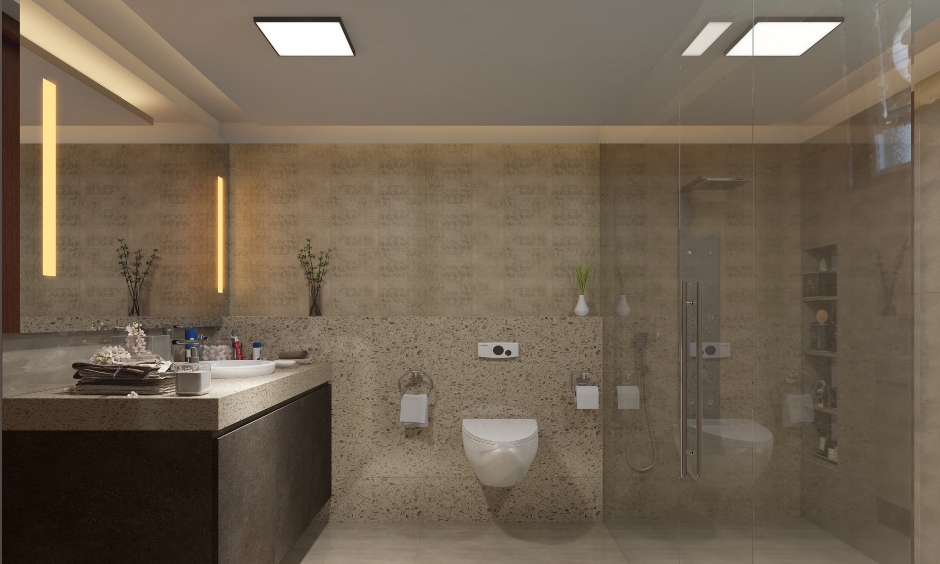
While furniture and fixtures play an important role, a complementing false ceiling can greatly elevate a bathroom space as well. A bathroom chandelier, for example, can add some glamour to the room and serve as a statement piece. The false ceiling itself, made from Plaster of Paris (POP), provides a smooth finish and brings focus to the chandelier.
This design can set the tone for the entire bathroom, making it look grand and welcoming. It also demonstrates the creativity and resourcefulness that can be applied when planning a bathroom.
By creating a remarkable, multipurpose space that can serve as both a bathroom and dressing room, the glass chandelier can perfectly fit in an area that is intended for both leisure and hygiene.
Skylight
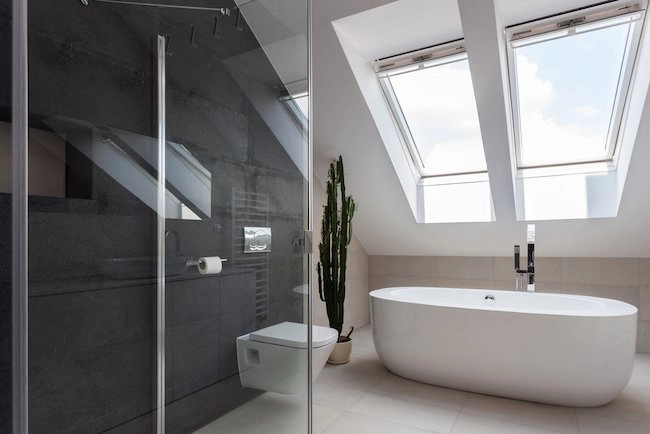
A skylight can provide natural light and make the bathroom look bigger than it actually is. It’s important to choose a skylight that is waterproof and provides adequate ventilation.
Textured Ceiling
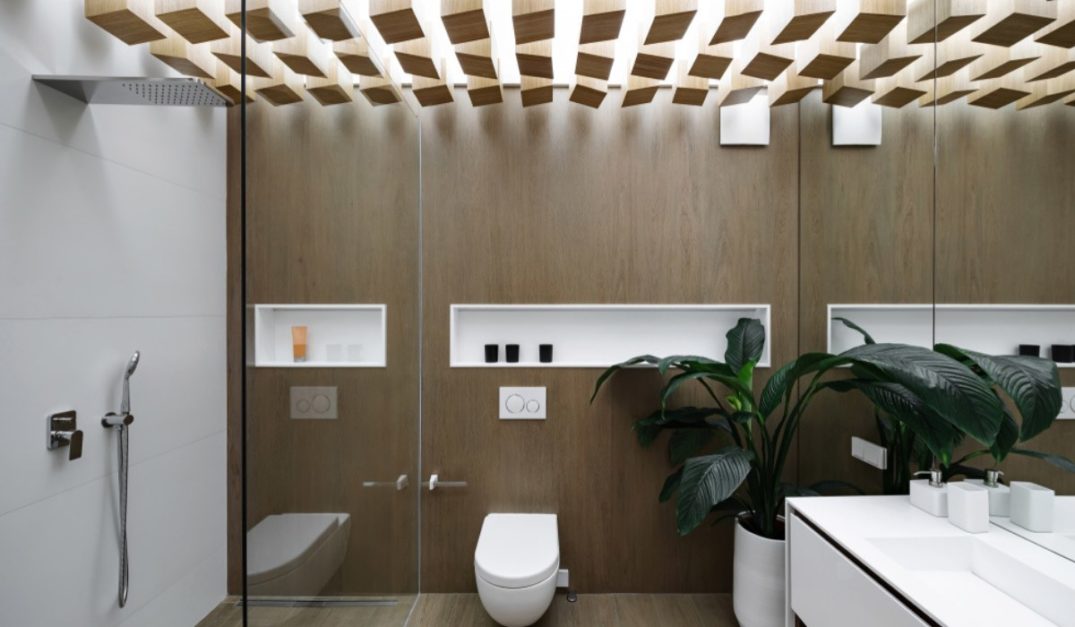
A textured ceiling can add depth and interest to a plain bathroom. This could be a beadboard panelling, a stamped metal ceiling, or a textured paint finish.
Recessed Lighting

Recessed lighting can create a sleek and modern look for a bathroom ceiling, while also providing an adequate amount of light for grooming and other tasks. For those looking to add a subtle touch of elegance to their bathroom, this may be an ideal design feature.
Recessed ceilings, also referred to as tray ceilings, are available in various shapes and sizes, making them suitable for large bathrooms or those with high ceilings. While the texture is often thought of as a tactile element that can be touched and felt, it can also be utilised in interior design to add visual interest and balance to a space.
By incorporating a simple dip in the ceiling, the bathroom can be enhanced with great texture, elevating the white ceiling and creating a more dynamic visual aesthetic.
Mirrored Ceiling
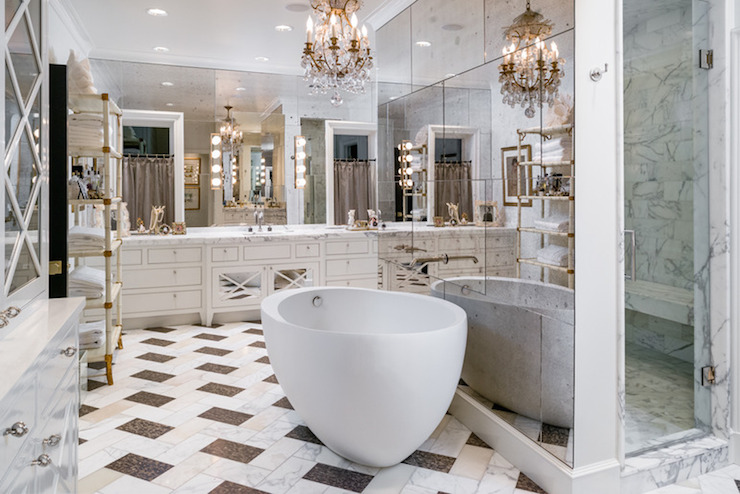
A mirrored ceiling can reflect light and, thus, add a sense of spaciousness to a small bathroom. However, it’s important to choose a high-quality mirror that is free from inconsistencies and does not distort the reflection.
Wood Ceiling
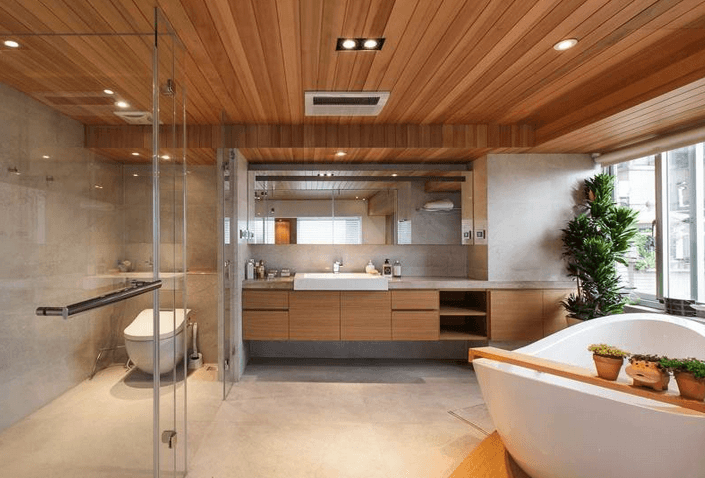
A wood ceiling can add warmth and texture to a bathroom. This could be a reclaimed wood panelling or a stained or painted wood ceiling. The natural patterns of the wood have made it a popular choice among homeowners. Panelling the ceiling is an easy and effective way to give a bathroom a country-chic update.
Additionally, some types of wood, such as cedar, teak, or pine, are moisture-resistant, making them a practical ceiling idea. Alternatively, a good quality, humidity-resistant shiplap can create a similar look at a more affordable price point.
Tips for Choosing the Right Bathroom Ceiling Design
There are several factors to consider before settling on a particular bathroom ceiling design, as listed below:
Moisture Resistance
For a bathroom, it’s important to choose a material that is resistant to moisture and mould. Options like tile and metal are great for this, while wood and drywall may require additional sealing or treatment.
Style
Consider the overall style of your bathroom and choose a ceiling design that complements it. A modern bathroom may benefit from a clean and simple ceiling, while a traditional bathroom may benefit from a decorative or textured ceiling.
Lighting
Consider how your ceiling design will impact the overall lighting of the space. A mirrored or light-coloured ceiling can help reflect light, while a textured or darker ceiling may absorb more light.
Maintenance
It is important to check how easy or difficult it would be to maintain your chosen ceiling design. A tiled ceiling may require regular cleaning and grout maintenance, while a painted or metal ceiling may be easier to clean.
DIY Bathroom Ceiling Design Tips
If you’re looking to DIY your bathroom ceiling design, here are some tips to keep in mind:
Measure Carefully
Before starting any project, make sure to measure your bathroom ceiling carefully to ensure you have enough material and to avoid any mistakes.
Prep the Surface
Make sure your bathroom ceiling is clean, dry, and free of any loose debris or peeling paint before starting any project. This will ensure that your new ceiling design adheres properly.
Choose the Right Materials
Consider the durability and moisture resistance of your chosen materials.
Use Proper Tools
Make sure to use the right tools for the job, including a level, a tile cutter, and appropriate adhesives and grout.
Be Patient
Changing your bathroom ceiling design can be a time-consuming and messy process, so be patient and take your time to ensure a high-quality result.
Conclusion
The bathroom ceiling is an important but often overlooked aspect of design. With the right material and design choices, a bathroom ceiling can add style, personality, as well as functionality to the space.
Whether you opt for a statement ceiling or a simple and clean design, consider the moisture resistance, style, lighting, and maintenance requirements of your chosen design.
Follow Graana blog for more related information.
